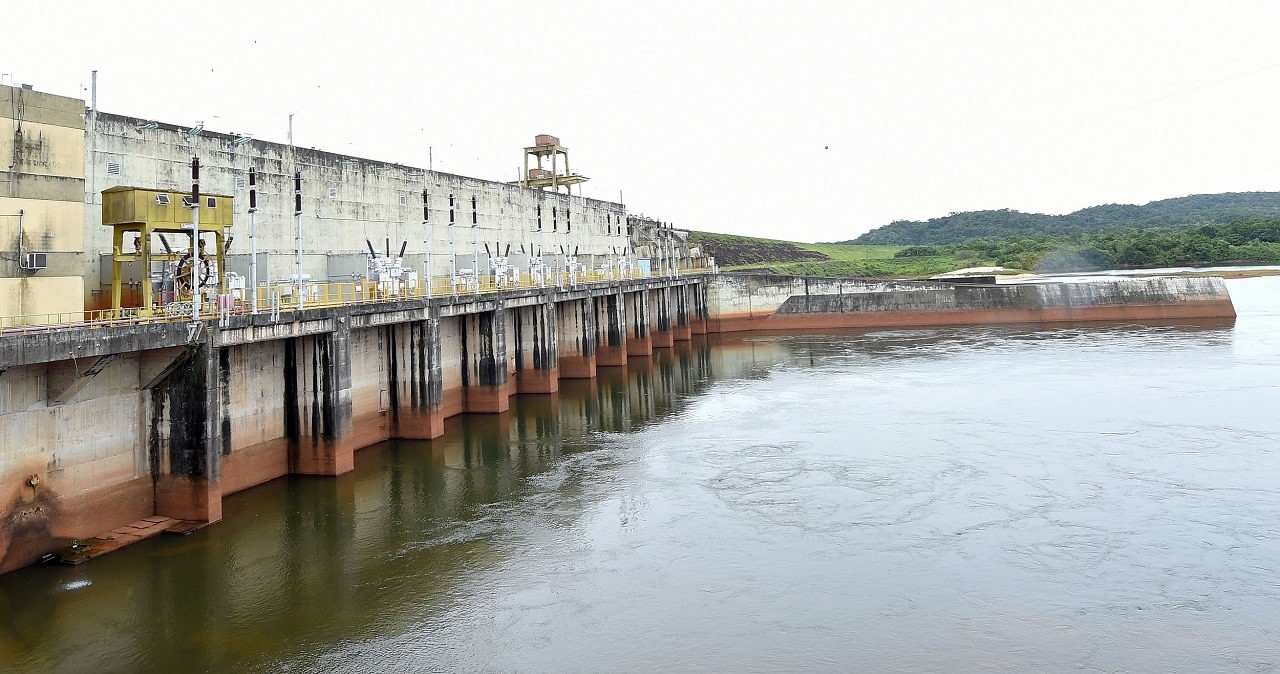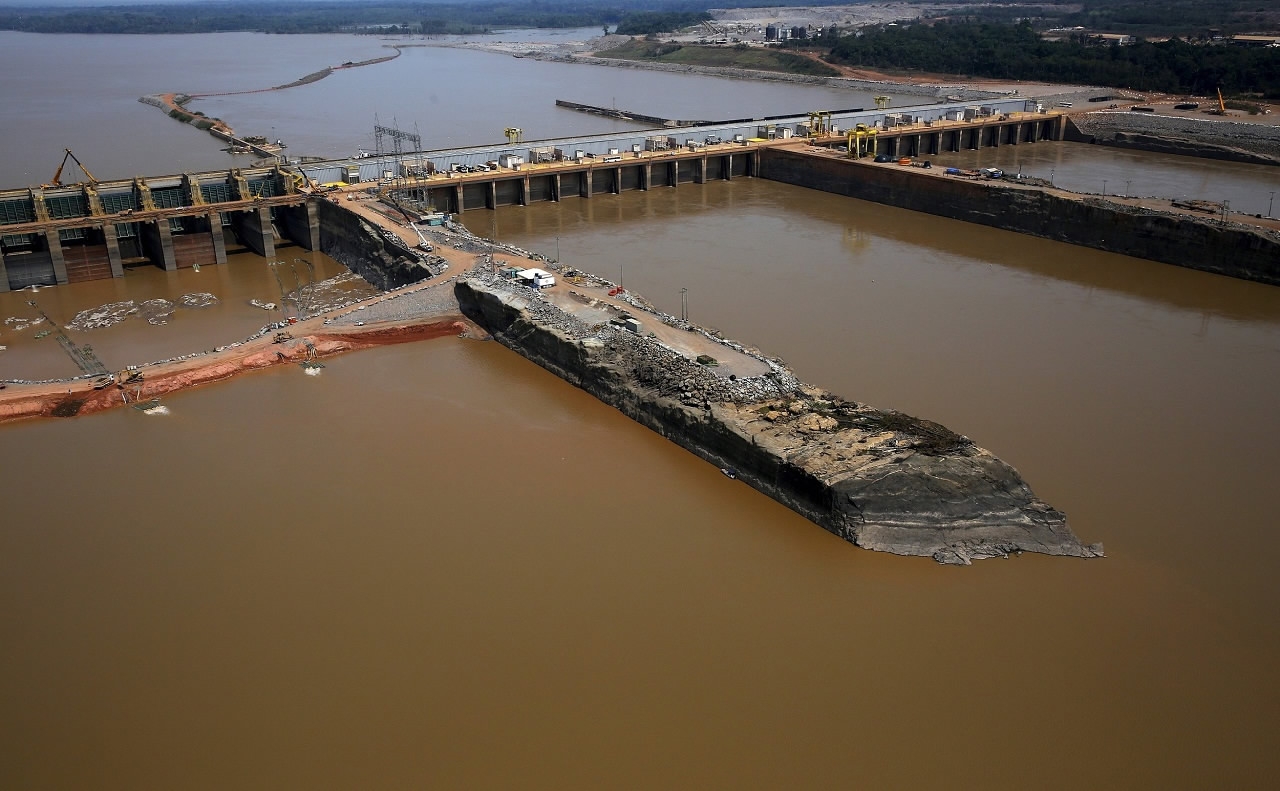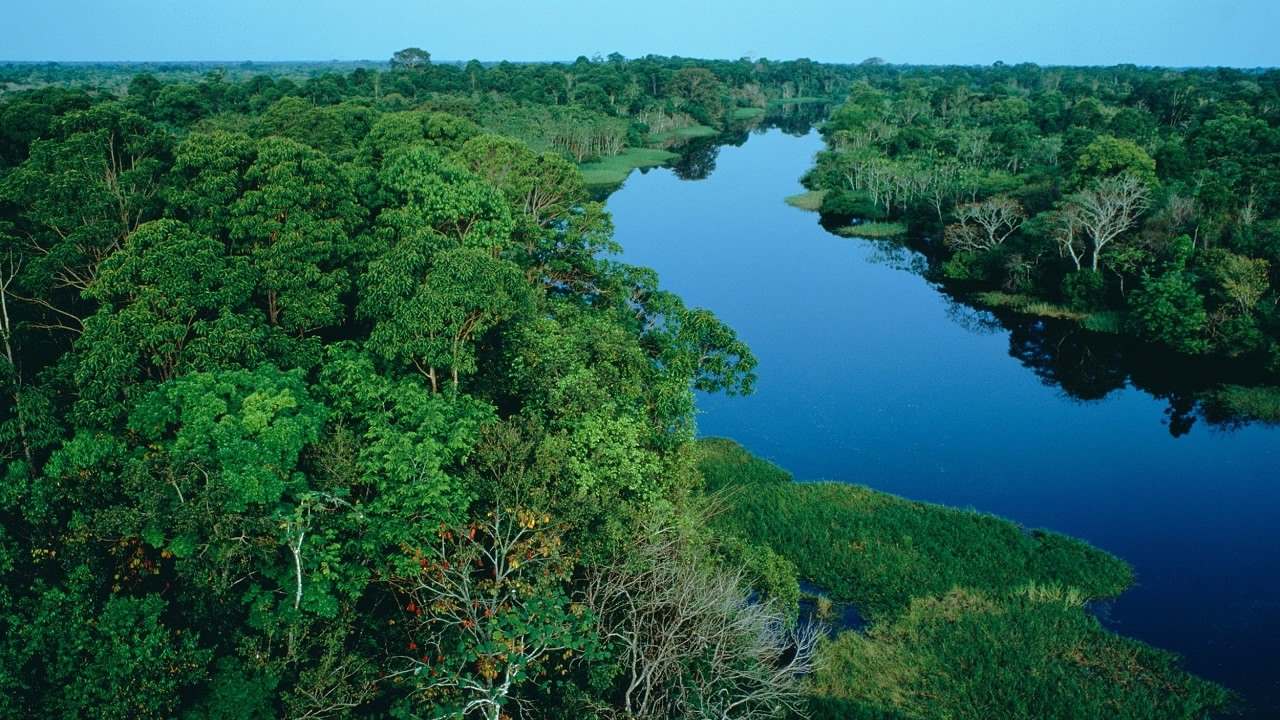Building the 428 hydroelectric dams proposed for Brazil's Amazon basin – three times the existing number – would devastate the environment and could even disrupt regional weather, an international team of researchers warned Wednesday.
Scientists unveiled a Dam Environmental Vulnerability Index (DEVI) in the journal Nature to score the impact of these future dams across a broad range of criteria and help policy planners decide which ones to leave on the drawing board.

The hydroelectric dam and power station at Balbina Dam, built on the Uatuma River in the Amazon rainforest, in the municipality of Presidente Figueiredo, Amazonas State, Brazil. /VCG Photo
"We have to put the risks of the table and change the way people are looking at the problem," lead author Edgardo Latrubesse, a professor at the University of Texas at Austin pointed out.
"We are massively destroying our natural resources, and time urges us to find some rational alternatives for preservation and sustainable development."
As the largest in the world, the network of rivers flowing into the Amazon River nourishes the planet's highest concentration of biodiversity. Damming these enormous tributaries – sometimes dozens of times – blocks nutrients that nourish downstream ecosystems, floods huge tracts of forest, and threatens both aquatic and terrestrial wildlife.
The new index grades dams from 1 (benign) to 100 (highly destructive), and can also be applied to existing structures.
Two huge dams, for example, recently built on the Madeira River, home to the most diverse fish population in the Amazon system, earned alarmingly high scores due to the potential for erosion, runoff pollution, and trapped sediment.

The construction of Santo Antonio Dam, a hydroelectric dam is seen on the Madeira River in Porto Velho, Rondonia State, Brazil, September 3, 2015. /VCG Photo
An additional 25 dams on the Madeira are planned for construction further upstream.
Researcher claimed that although dams are examples of great engineering achievements for supporting healthy societies and human development, they caused massive and negative environmental impacts. A more comprehensive approach to predicting those impacts is welcome because existing methods fall short, said James Syvitski, top expert in Earth surface dynamics at the University of Colorado-Boulder, commenting on the new study, to which he did not contribute.
The loss of sediment downstream, for instance, is an oft overlooked problem, especially for densely-populated delta regions.
Resculpting Earth's surface

Red-crowned amazon looking from a tree hole. /VCG Photo
The steady accumulation of silt is essential for maintaining healthy mangroves, the coastal forests that thrive in brackish water, protecting against storm surges and serving as aquatic nurseries for dozens of species.
The loss of sediment is also causing the world's major deltas - home to 600 million people - to sink, part of a triple threat that includes rising seas (driven by climate change) and subsiding land (due to the depletion of underground aquifers).
Earlier research has also shown that changes in sediment flow from the Amazon basin can affect rainfall and storm patterns as far away as the Gulf of Mexico.
"If all the planned dams in the basin are constructed, their cumulative effect will trigger a change in sediment flowing into the Atlantic Ocean that may hinder the regional climate," Latrubesse said.

Elevated view of Amazon River tributary. /VCG Photo
Worldwide, there are more than 58,500 large dams at least 15 meters from foundation to crest, or impounding at least three million cubic meters.
"We are sculpting the surface of the Earth," Syvitski told AFP. "Thousands of dams built since the mid-19th century have completely altered the planet's terrestrial plumbing."
Modern dams can be built in ways that minimize negative impacts on mammals and larger fish, better manage flooding downstream, prevent carbon from leeching into the atmosphere, and reduce the amount of sediment that clogs reservoirs.
"But these mitigations cost money, and reduce the return on investment," Syvitski claimed.
China has 40 percent of the world's large dams. Add those in the United States and India, and that percentage rises to two-thirds, according to the International Commission on Large Dams.
(Source: AFP)









